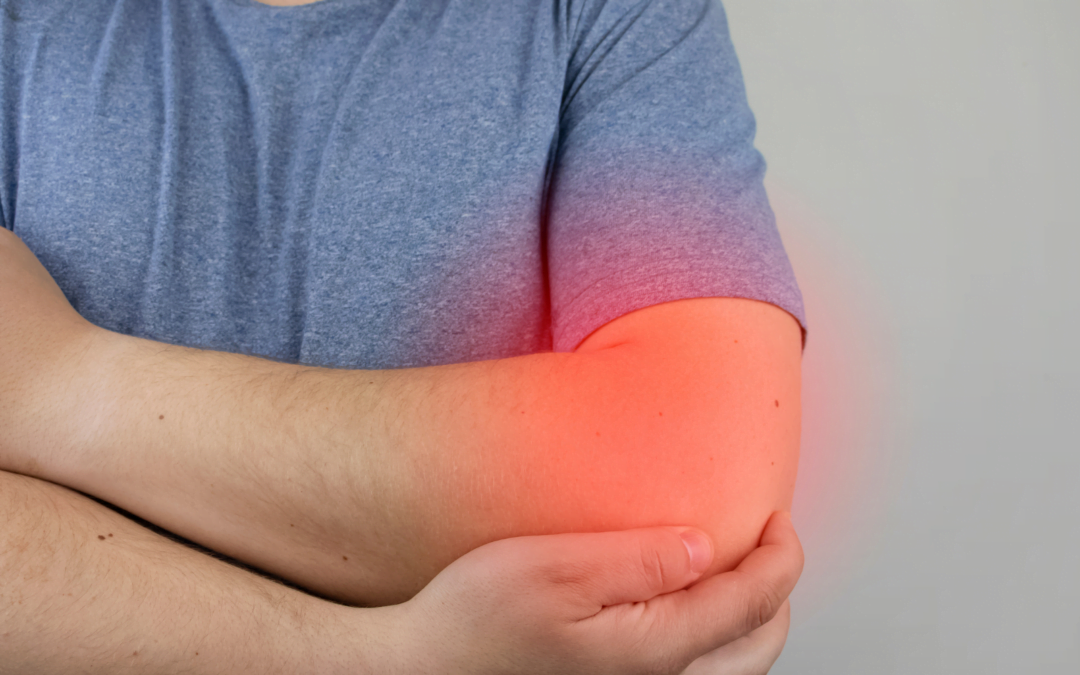While we are usually unaware of the bursae in our bodies, when one of them becomes inflamed the pain is hard to ignore.
What is a bursa? A bursa is a pouch filled with a small amount of lubricating fluid that provides cushioning between a bone and a tendon, ligament, muscle or skin, which allows them to slide smoothly over the bone as it moves.
Bursae are located wherever tissue and bone meet. When the tissue of the bursa becomes swollen and inflamed it causes bursitis. Though bursitis can occur anywhere in the body where bursae are located, the most common areas are the shoulder, hip, knee and elbow.
Elbow bursitisis one of the more common types of this disorder and is common among students and tennis players. Though this may seem an unusual combination of people at risk for this condition, it makes sense when you realize that bursitis can be caused by excessive repetitive motion (as in hitting a tennis ball, vacuuming or hammering, for example) or putting frequent pressure on the bursa (like when a student leans on their elbows at their desk).
A traumatic injury to the area, such as in a fall or a car accident, can also lead to bursitis. If bacteria get inside the bursa via a wound, an infection may result, leading to heat, redness, fever, chills, swelling and pain, and excess fluid will collect in the bursa, causing a large bump to form around the elbow (think of Popeye). Additionally, those who suffer from gout, diabetes or rheumatoid arthritis are at greater risk of contracting the condition.
The bursa of the elbow lies just behind the point of bone called the olecranon (which is why it is technically referred to as olecranon bursitis). As the inflamed tissue of the bursa stretches and fills with excess fluid, it reduces the amount of space around the joint, so it becomes more difficult for the joint to move, and causes feelings of pain and stiffness.
The first treatment for bursitis is RICE (Rest, Ice, Compression and Elevation).
Rest the elbow as much as possible, being sure to keep as much pressure off it as possible. Elbow pads can be used to cushion the elbow, if necessary. Reduce swelling by applying ice and wrapping an elastic bandage around the elbow, and keep your arm elevated above your heart.
As with most soft tissue injuries, it’s always wise to have them assessed by your local chiropractor first. Chiropractic is a wonderful and powerful treatment option for those suffering from bursitis. If the pain persists, you may also be advised to take an anti-inflammatory herb or medication to help decrease inflammation and reduce pain. If your chiropractor suspects infection, a referral for antibiotics is necessary.
Sometimes excess fluid is removed via aspiration where a needle is inserted into the bursa so the fluid can be drawn out. This is an in-office treatment normally performed by an orthopedist. Typically, a sample of the fluid will be sent off to the lab to determine infection type or severity. And, in rare cases, surgery may be recommended to remove the bursa entirely if all conservative options have been exhausted and yet the condition has been prolonged.
Elbow bursitis generally heals in a matter of weeks or months, depending on its severity. Your chiropractor can recommend exercises to help restore range of motion. If you’re suffering from this condition, please call us for an evaluation.

